If you’re anything like me, managing your finances can sometimes feel like a tedious but necessary task. Between tracking spending, remembering bills, and trying to save, it’s a lot to juggle.
But that’s where personal finance apps come in! They’ve made it so much easier for people to handle their money, spending, income, etc all from the comfort of their phones.
These apps have grown super popular because they offer real convenience, are easy to use, and give us a clear view of our finances. Where our money went this month: a comprehensive approach to monitoring expenditures and identifying spending patterns.
Whether you’re hoping to save more, keep tabs on your spending, invest in your future, or finally pay off those pesky debts, there’s an app out there to help.
In this guide, I’ll walk you through everything you need to know about personal finance apps, from the best ones for each financial goal to tips on choosing the right one. Let’s dive in!
Table of Contents
Toggle1. What Are Personal Finance Apps?
So, what exactly are personal finance apps, and why are they so helpful?
Personal finance apps are apps designed to help people track, manage, and improve their finances.
They cover everything from budgeting and saving to investing and debt management. If you’ve ever felt a bit lost when it comes to your money, these apps are like a friendly guide, helping you stay on top of things.
One of the best things about using an app for finances (instead of, say, a notebook or a spreadsheet) is the real-time tracking. You can check your progress, get updates, and see everything in one place without any hassle. Plus, many apps even help set up goals, whether it’s saving for a vacation or paying off a loan.
2. Types of Personal Finance Apps
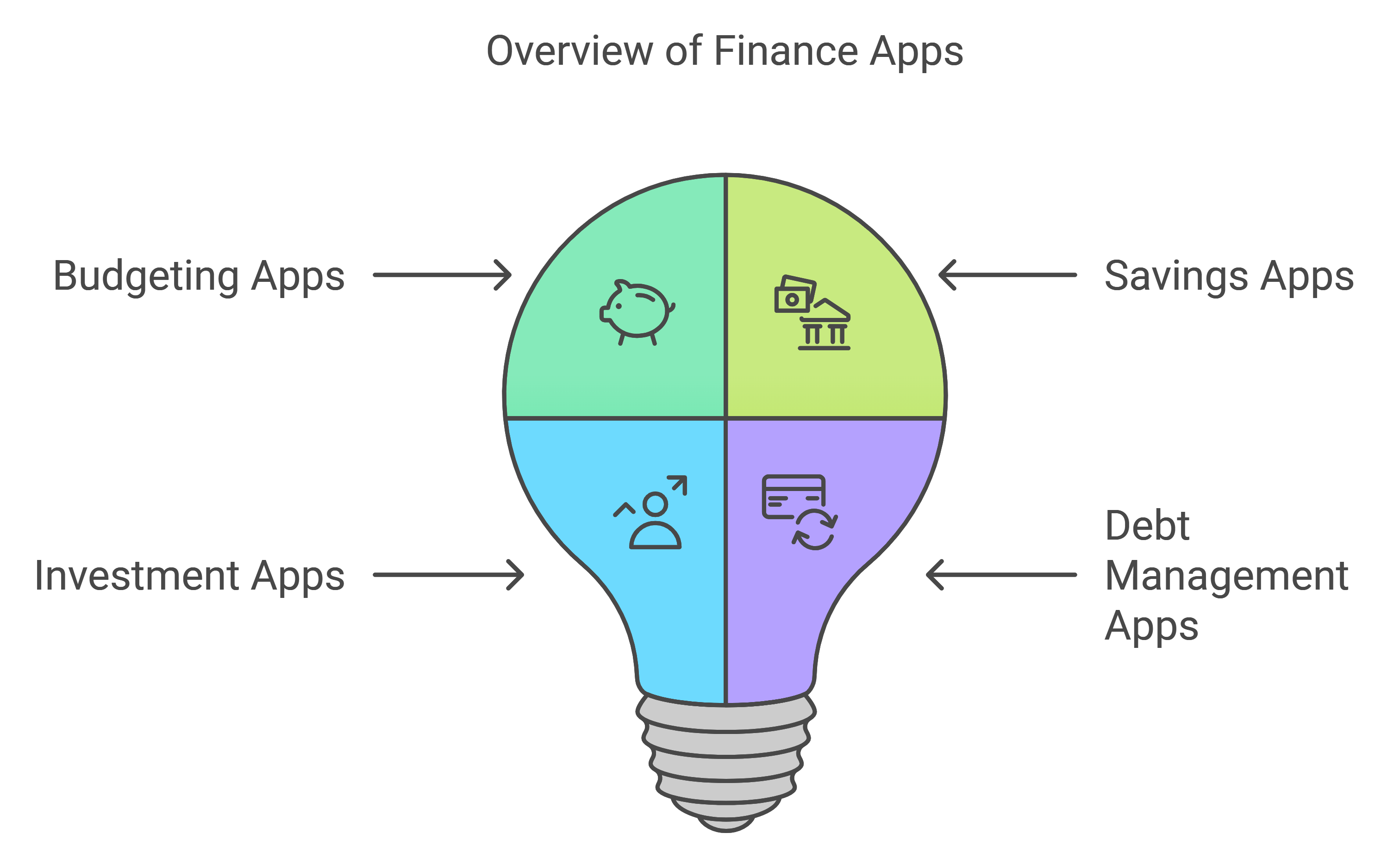
There are a lot of Fintech/ Financial apps out there, so it’s helpful to understand the different types. Here’s a breakdown of the main types and how they can help:
Budgeting Apps
These apps are lifesavers if you want to keep a close eye on your spending. They let you track where your money’s going, create spending categories, and set budgets. For example, you could set up a category for groceries, entertainment, or Rentals or even spend on utilities and see where your money is going each month.
Savings Apps
If saving money doesn’t come naturally, these apps make it almost automatic. Some round up your purchases to the nearest dollar and save the change, while others set up regular savings goals or encourage you to save a little bit every day. It’s like having a personal cheerleader for your savings!
Investment Apps
These are for the folks who want to grow their money. Investment apps often come with robo-advisors, which give you hands-off investing options based on your risk tolerance and goals. They also make investing super approachable for beginners, with simple setups and low fees.
Debt Management Apps
Have you got debt? You’re not alone, and there are apps to help you out. Debt management apps track your credit card balances, loans, and other debts. They offer payment reminders and strategies for paying down debt faster, which is super motivating if you aim to become debt-free.
3. Top Features to Look for in Personal Finance Apps
Not all apps are created equal, so here are some features to keep in mind when you’re choosing a personal finance app:
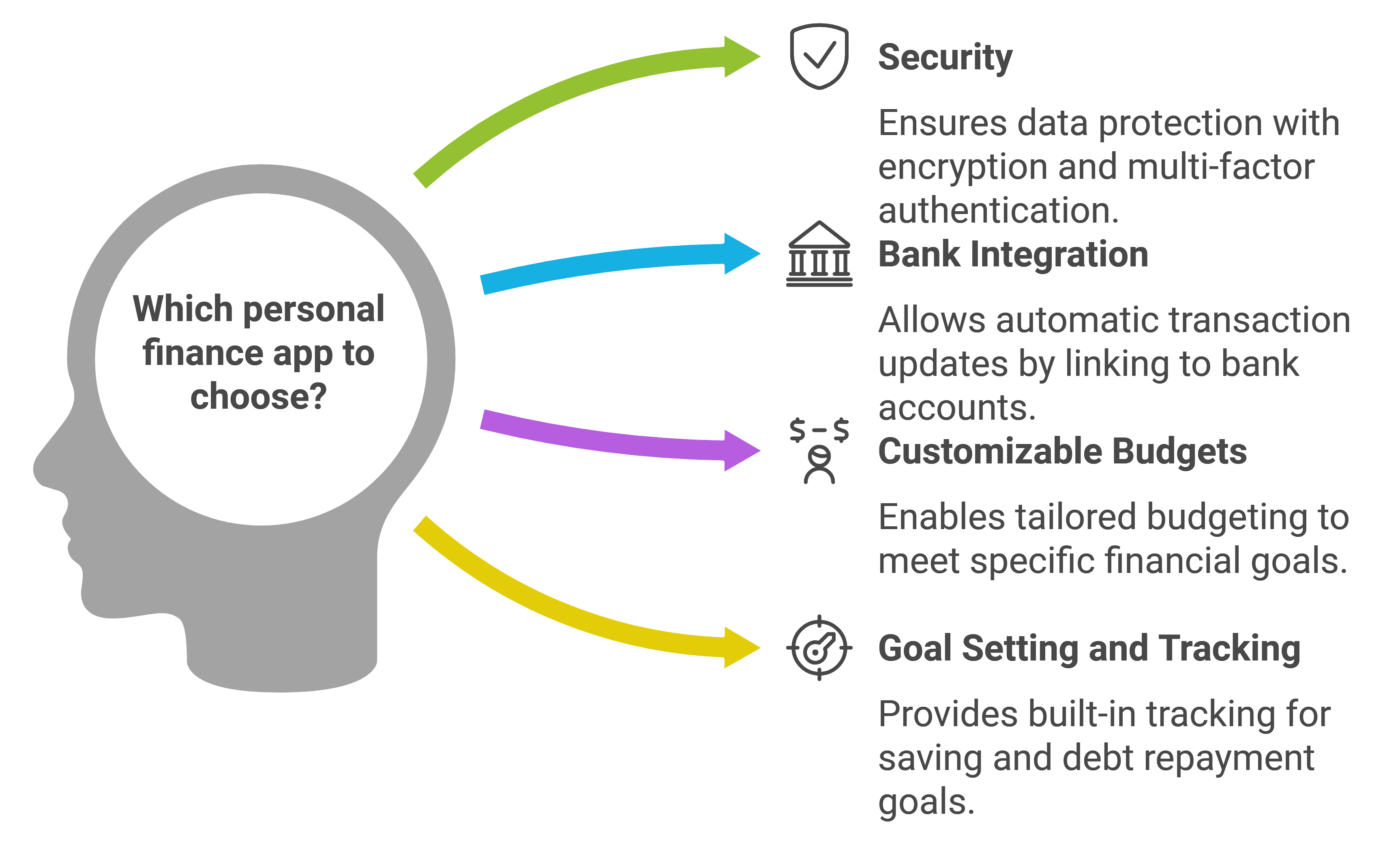
- Security: Look for apps with solid data encryption and multi-factor authentication. Keeping your info safe is key!
- Bank Integration: It’s so helpful when apps link directly to your bank accounts and credit cards so that transactions update automatically.
- Customizable Budgets: If you have specific financial goals, find an app that lets you adjust and tailor budgets to your needs.
- Goal Setting and Tracking: Whether it’s saving up for something big or paying off debt, having built-in goal tracking is a game-changer.
- Automation Options: Automation is your friend. Look for apps that can set up auto-savings or recurring bill payments, so you don’t have to worry about missing anything.
- Customer Support: Sometimes, you’ll need a bit of help. masses like it when you call & someone on the other side listens to your problem. AI is replacing Customer service but the importance of the human touch never replaces. Make sure the app has decent customer support in case anything goes wrong.
4. List of the Best Financial Apps
When choosing a personal finance app, it’s crucial to match it to your unique financial goals. Let’s dive deeper into some of the best apps out there across four key areas: budgeting, saving, debt management, and investing.
List of the Best Budgeting Apps
Budgeting apps are ideal if you’re trying to keep a close eye on spending and ensure you’re sticking to your financial goals. Here are more popular options:
- Mint
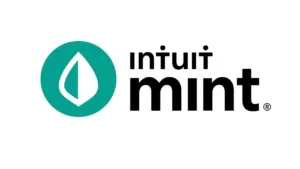
Mint is a go-to budgeting app, free to use, and popular for its easy, automated tracking of spending across linked bank accounts. It also offers credit score monitoring and bill reminders, making it a comprehensive choice.
Download Mint app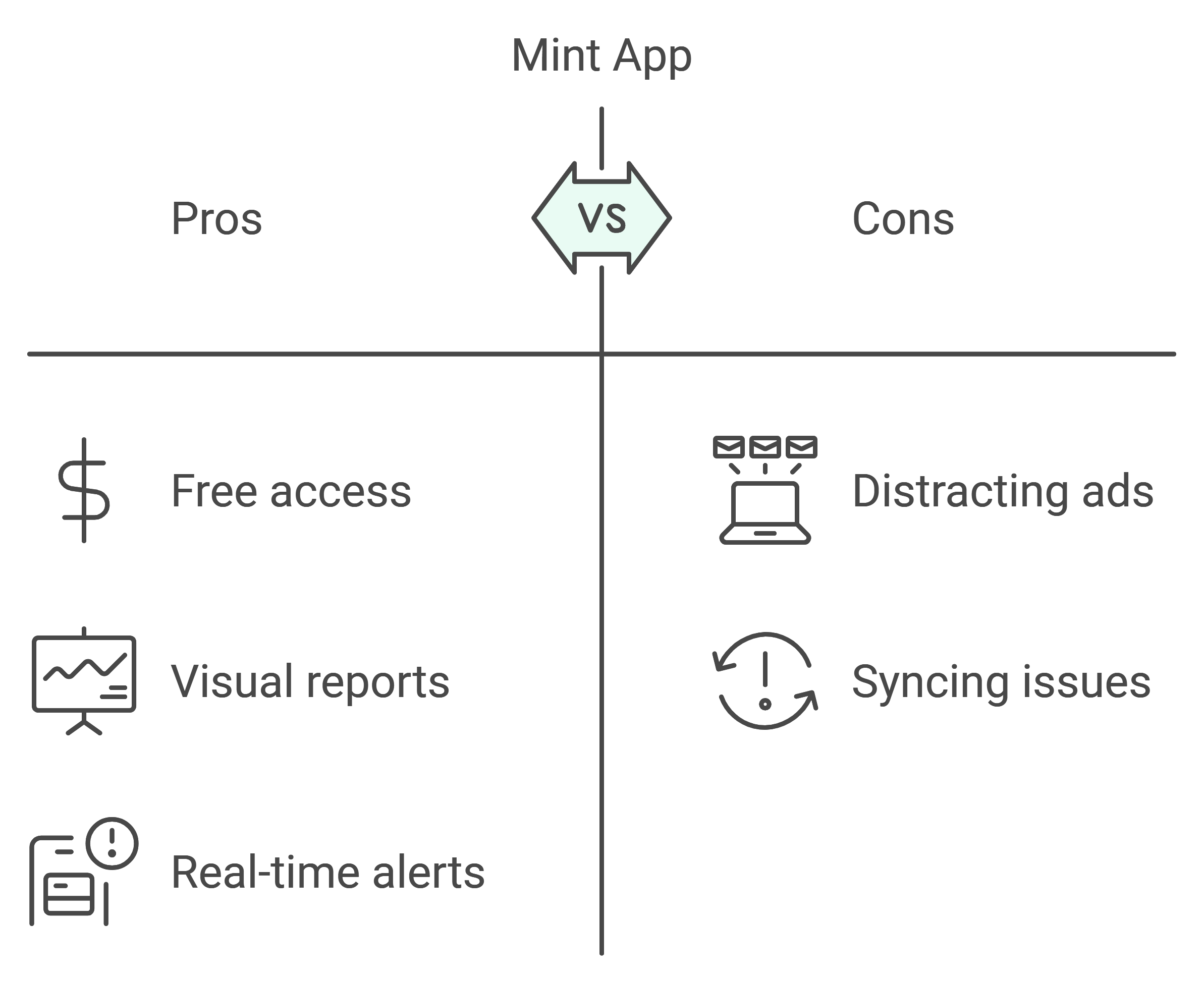
2. YNAB (You Need A Budget)
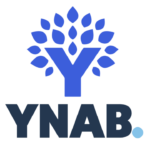
YNAB takes a proactive approach, encouraging users to assign every dollar a purpose. This approach helps users prioritize their spending and avoid overspending.
- Pros: Effective for disciplined budgeting, and insightful reporting.
- Cons: Paid subscription, which can be a drawback for some.
3. Goodbudget

Goodbudget is an envelope-based budgeting app that helps users allocate funds to different “envelopes,” each representing a budget category.
- Pros: Great for couples or families; web and mobile app options.
- Cons: Limited bank syncing; might feel too manual for some.
4. PocketGuard

PocketGuard analyzes your spending and helps you see what you have “left to spend” after covering bills and savings goals. It’s straightforward and ideal for those who want a simple, quick way to budget.
- Pros: Easy to use; focuses on discretionary spending.
- Cons: Limited customization; no manual entry option.
List of the Best Savings Apps
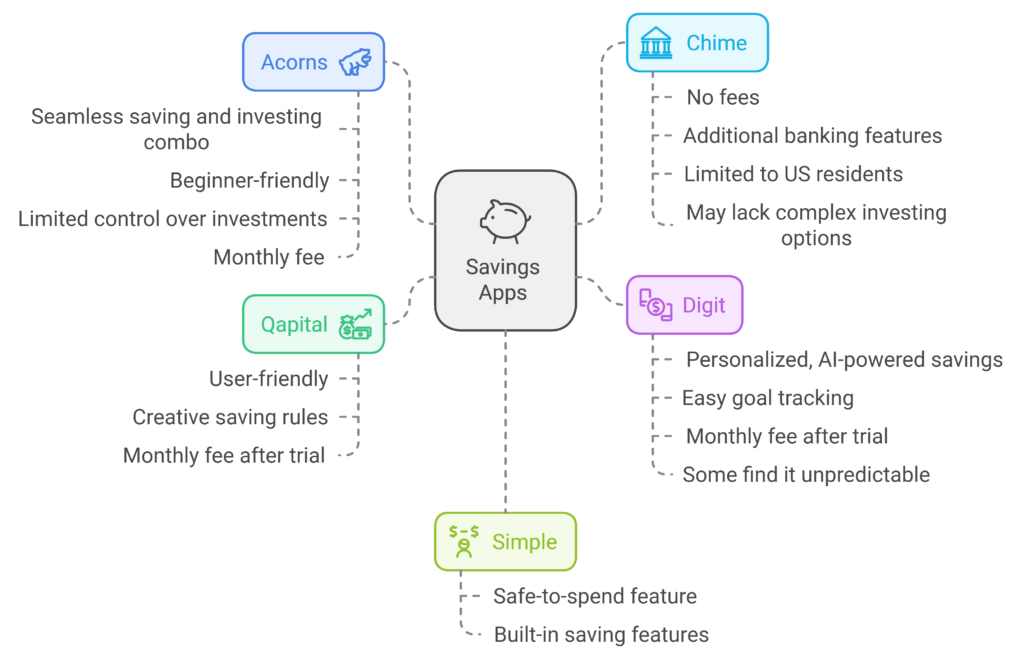
Savings ensure financial security; they can be used to handle unexpected expenses, map out major life goals, and lay a comfortable plan for the future.
As saving becomes habitual, there will be less reliance on debt, and one is free to choose everything from owning a house to traveling or retirement. Consistent saving helps build resilience against financial uncertainties and gives one peace of mind because one is always prepared for planned and unforeseen needs.
If you struggle to put away savings, these apps make it effortless by automating the process. Here are a few top picks:
Qapital

Qapital lets users set savings goals and create automated rules that help them save without thinking about it, like rounding up purchases or setting daily deposits.
Pros: User-friendly; creative saving rules.
Cons: Monthly fee after the trial.
Acorns
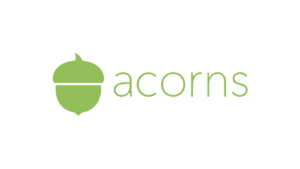
Acorns round up your purchases to the nearest dollar and invest the spare change, helping users build a savings portfolio without effort.
Pros: Seamless saving and investing combo; beginner-friendly.
Cons: Limited control over investments; monthly fee.
Chime
Chime functions as an online bank with a focus on automatic savings. It offers a feature to automatically save a percentage of each paycheck and round-up savings.
Pros: No fees; additional banking features.
Cons: Limited to US residents; may lack complex investing options.
Digit
Digit is a savings app that analyzes your spending habits and saves money for you based on what it calculates you can afford.
Pros: Personalized, AI-powered savings; easy goal tracking.
Cons: Monthly fee after the trial period; some users find it unpredictable.
Simple
Simple is a banking and budgeting app with built-in saving features. It offers a “safe-to-spend” feature that shows you what you have left after accounting for bills and savings goals.
Pros: Combines budgeting and saving; user-friendly design.
Cons: Limited availability in some regions; no complex investing tools.
List of the Best Debt Management Apps
Debt management apps are great if you’re looking to tackle debt strategically. Here are more options:
- Debt Payoff Planner
A straightforward app designed to help users track debt repayment. It provides payoff strategies and calculators for personalized debt planning. - Pros: Simple to set up; motivating payoff projections.
- Cons: Limited beyond debt tracking; the paid version has more features.
- Tally
Tally offers a unique approach to debt management by combining credit card payments for users to save on interest. It’s especially helpful for those with multiple credit cards. - Pros: Potential interest savings; automates payments.
- Cons: Limited to certain states in the U.S.; only for credit card debt.
- Undebt.it
This app lets you track debts and create customized payoff strategies. It’s known for its flexibility and support for multiple payoff strategies (like the snowball method). - Pros: Multiple payoff strategies; comprehensive debt tracking.
- Cons: No bank syncing; may feel manual for some users.
- Credit Karma
Known mostly for credit score tracking, Credit Karma also offers personalized recommendations for debt repayment, including balance transfer offers and debt consolidation options. - Pros: Free credit score tracking; tailored debt reduction tips.
- Cons: Ad-heavy interface; focuses on credit score debt management.
- Prism
Prism doesn’t just track debt—it’s also a bill management app. It syncs with over 11,000 billers to help users keep track of payments and avoid missed payments. - Pros: Bill tracking and debt management in one; free to use.
- Cons: No debt payoff calculators; limited financial advice.
Investment Apps
Investment apps are designed to help beginners dip their toes into investing or seasoned investors grow their portfolios. Here are more options to consider:
- Robinhood
Known for commission-free trades, Robinhood makes it easy to buy and sell stocks, ETFs, and even some cryptocurrencies.- Pros: No fees; intuitive interface.
- Cons: Limited educational resources; lack of advanced tools.
- Stash
Stash is designed for new investors, offering low-cost entry points and educational resources. It’s ideal for those who want to learn the basics of investing.- Pros: Beginner-friendly; goal-based investment options.
- Cons: Monthly fee; limited to U.S. markets.
- Betterment
Betterment is a robo-advisor that creates a personalized investment portfolio based on your goals, making it a hands-off investment option.- Pros: Hands-off; personalized portfolios.
- Cons: Management fees; no direct stock trading.
- Fidelity Spire
Fidelity Spire is designed for goal-based investing. It’s free to use, and ideal for young investors looking to save for specific goals.- Pros: Free; supports goal-based investing.
- Cons: Limited to Fidelity’s investment products; less customizable.
- M1 Finance
M1 Finance combines the best of both worlds, offering a hybrid of automated investing with customizable portfolios. It’s great for users who want some control but also prefer a hands-off approach.- Pros: Free investing options; customizable portfolios.
- Cons: No in-depth investment research tools; limited educational content.
- Wealthfront
Wealthfront is another robo-advisor offering automated investment management but with more focus on tax-loss harvesting and retirement planning.- Pros: Great for tax-conscious investors; extensive retirement tools.
- Cons: Annual management fee; no direct access to individual stocks.
5. How to Choose the Right Personal Finance App for You
With so many options, how do you choose the best app? Start by thinking about your needs. If budgeting is your main focus, an app like Mint or YNAB might be perfect. For saving, apps like Acorns or Qapital could be game-changers. Here are a few tips for making the right choice:
- Define Your Goals: Are you mainly focused on tracking expenses, saving, or investing?
- Consider Free vs. Paid Options: Some apps are free but might come with ads, while others charge a monthly fee but offer extra features.
- Try a Few Apps: Many apps offer free trials, so you can test them out to see which one you like best.
6. Benefits of Using Personal Finance Apps
Using a personal finance app offers so many advantages! Here are just a few:
- Saves time and effort with automated tracking and reminders.
- Encourages better spending habits by showing where your money goes.
- Builds financial awareness, which is the first step toward reaching your goals.
- Helps reduce financial stress by giving you a clear picture of your money.
7. Common Pitfalls and How to Avoid Them
While these apps are helpful, there are a few things to watch out for:
- Over-reliance on Automation: It’s easy to set it and forget it, but you’ll want to check in regularly to stay engaged with your finances.
- Neglecting Manual Checks: Apps aren’t perfect and can sometimes miss a transaction or miscategorize it.
- Overspending: Some apps have cash-back offers, which might tempt you to overspend just to get a deal.
To get the most out of your app, remember to review your transactions regularly and stay mindful of your goals.
Final thoughts
Personal finance apps are an incredible tool to help you stay on top of your money, whatever your financial goals may be. Whether you want to budget better, save more, invest for the future, or finally pay off that credit card debt, there’s an app out there for you. Give a few of them a try and see what works best for your lifestyle. Here’s to taking charge of your financial future—happy managing!
